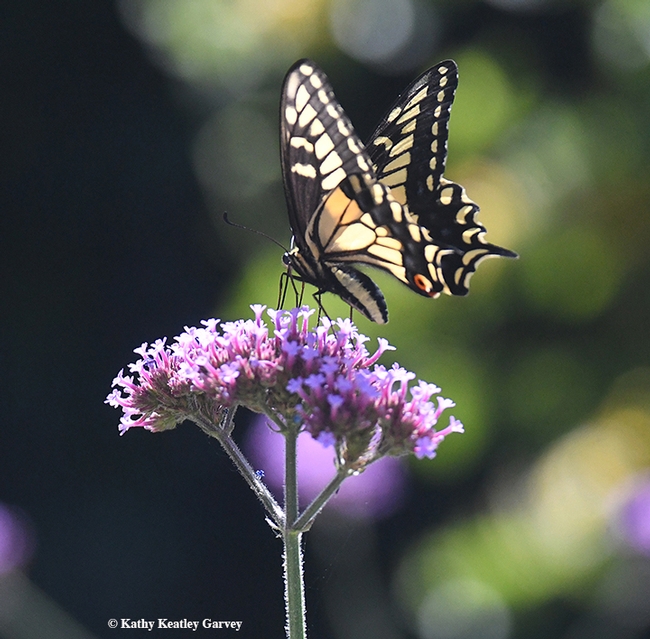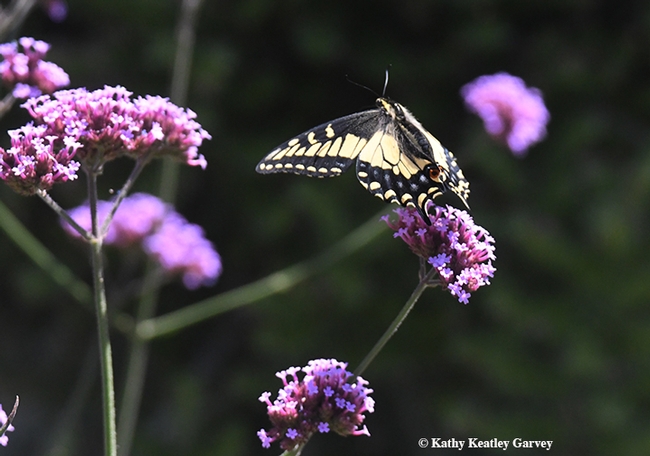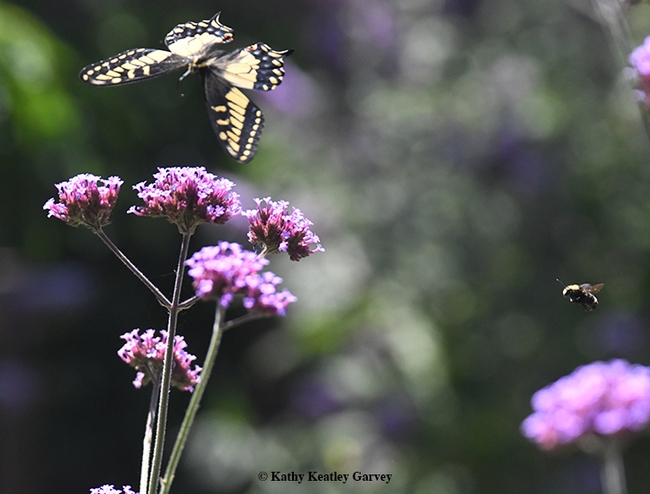The Anise Swallowtail, Papilio zelicaon, fluttered into our pollinator garden and headed straight for the Verbena.
Art Shapiro, distinguished professor of evolution and ecology at the University of California, Davis, identified the gender: "it's a girl."
The Anise Swallowtail, our first sighting of the season, bypassed the butterfly bush, Buddleia davidii.
But she'll be back--hopefully to gather some more nectar and lay her eggs on our fennel.
The Verbena patch was a little too populated for her liking--honey bees and yellow-faced bumble bees, Bombus vosnesenskii, wanted their share of the nectar, too.
"The Anise Swallowtail is a complex set of ecological races, or 'ecotypes,' whose seasonality has been adjusted by natural selection to match that of their host plants," says Shapiro on his research website. He's studied butterfly populations in central California since 1972.
"In multivoltine populations the spring brood is typically small, pale, heavily marked with blue and with narrow dark borders on all wings. Summer individuals are larger, with richer yellow color, broader black borders and little or no blue in males. Univoltine populations tend to be intermediate between these extremes. The small larvae resemble bird droppings. Large larvae are pale green with black bands containing orange spots; in hot, dry sites there is more green and less black, while under cool, humid conditions the green may even disappear! The pupae may be brown or green."
Read more about the swallowtail, including its food sources, on Shapiro's web page.
Meanwhile, whether you see your first Anise Swallowtail of the season or the last of the season, you'll want to see more of this yellow-mellow butterfly!
Attached Images:

Anise Swallowtail Papilio zelicaon, nectaring on Verbena in Vacaville, Calif. (Photo by Kathy Keatley Garvey)

Butterfly ballet! Bees startled this Anise Swallowtail that was nectaring on Verbena. (Photo by Kathy Keatley Garvey)

A yellow-faced bumble bee, Bombus vosnesenskii, heads for the same Verbena blossom occupied by the Anise Swallowtail. (Photo by Kathy Keatley Garvey)